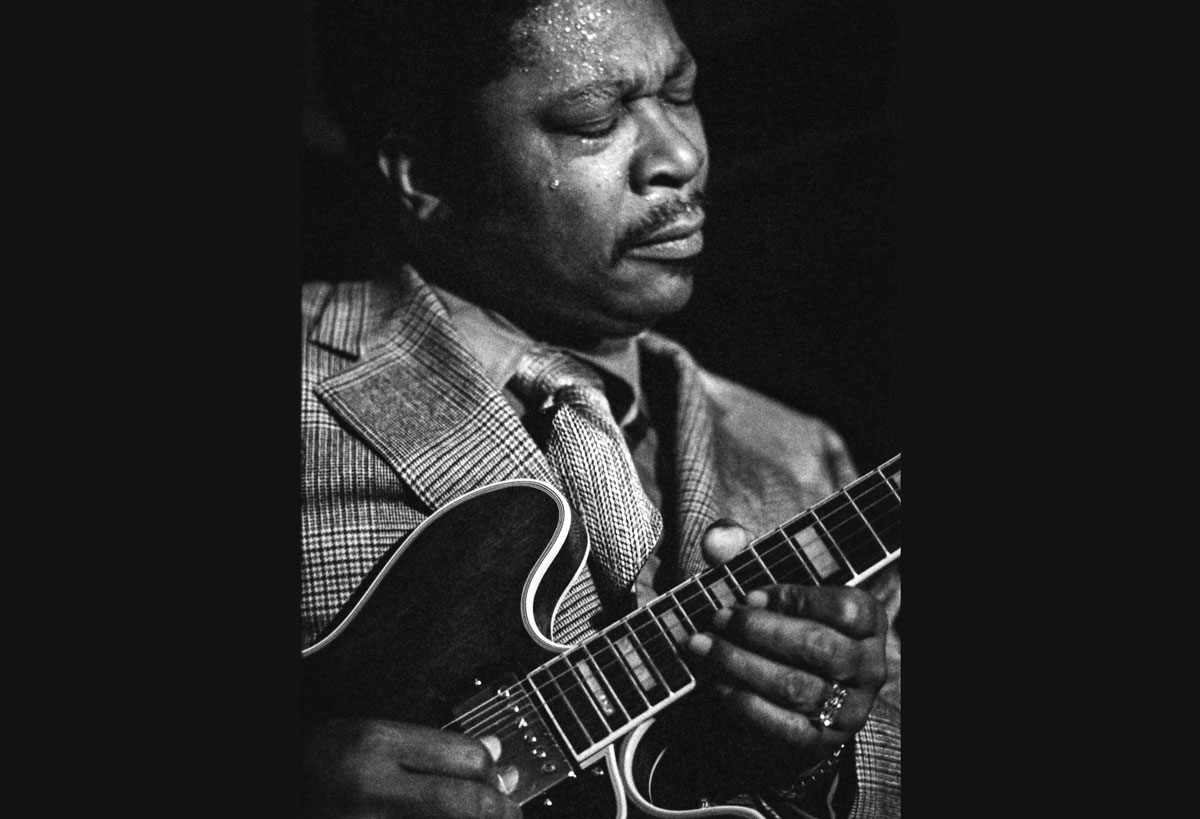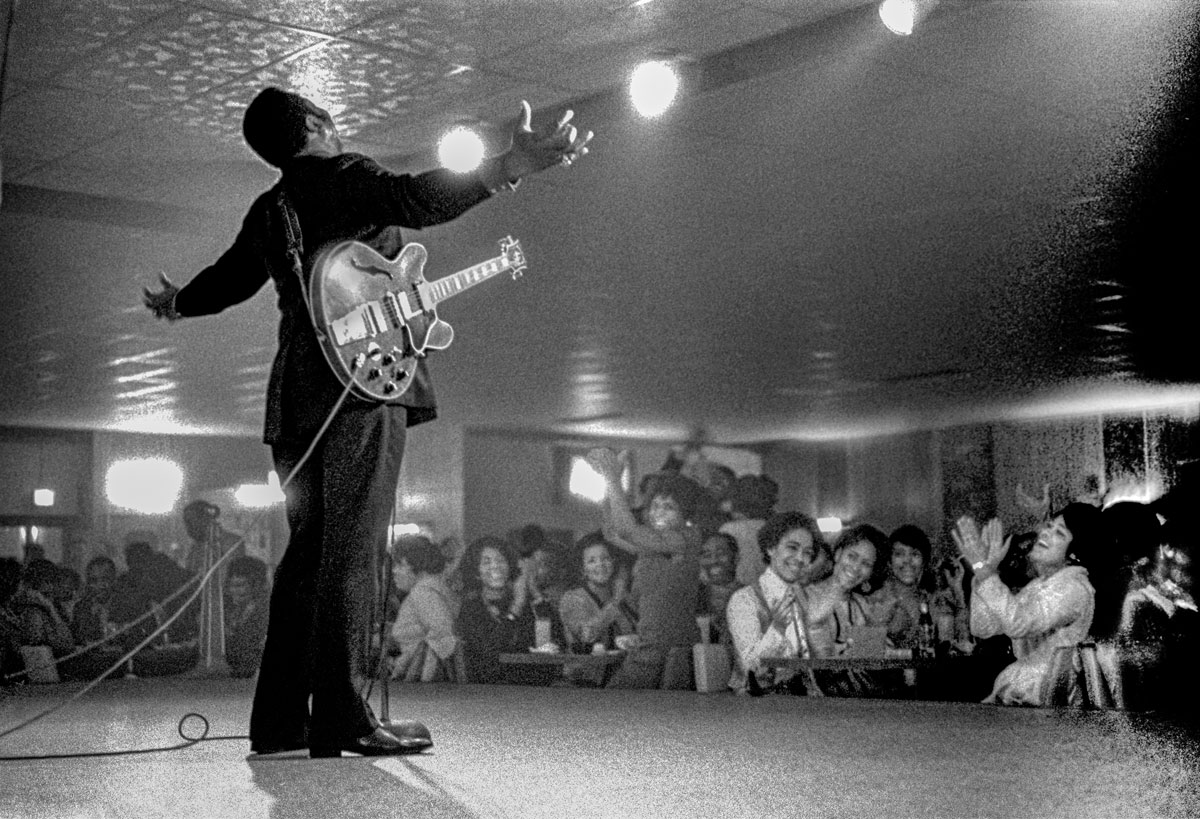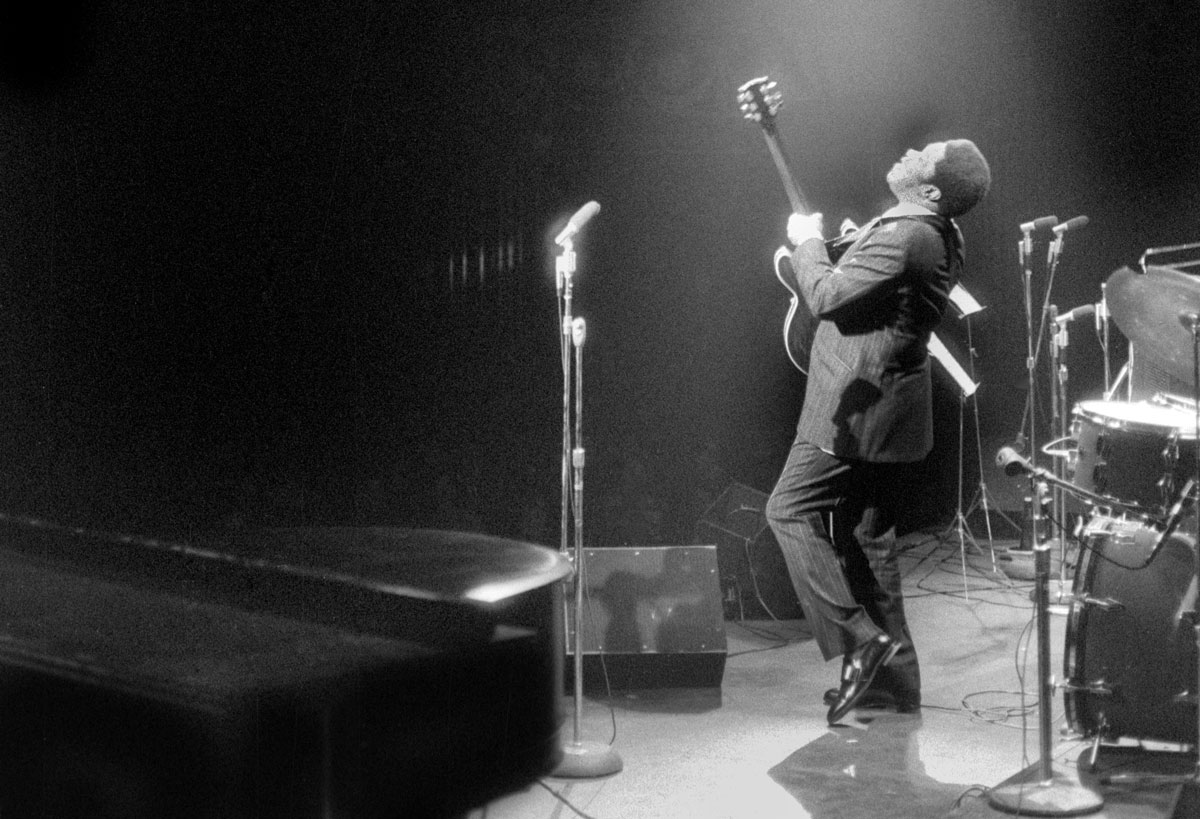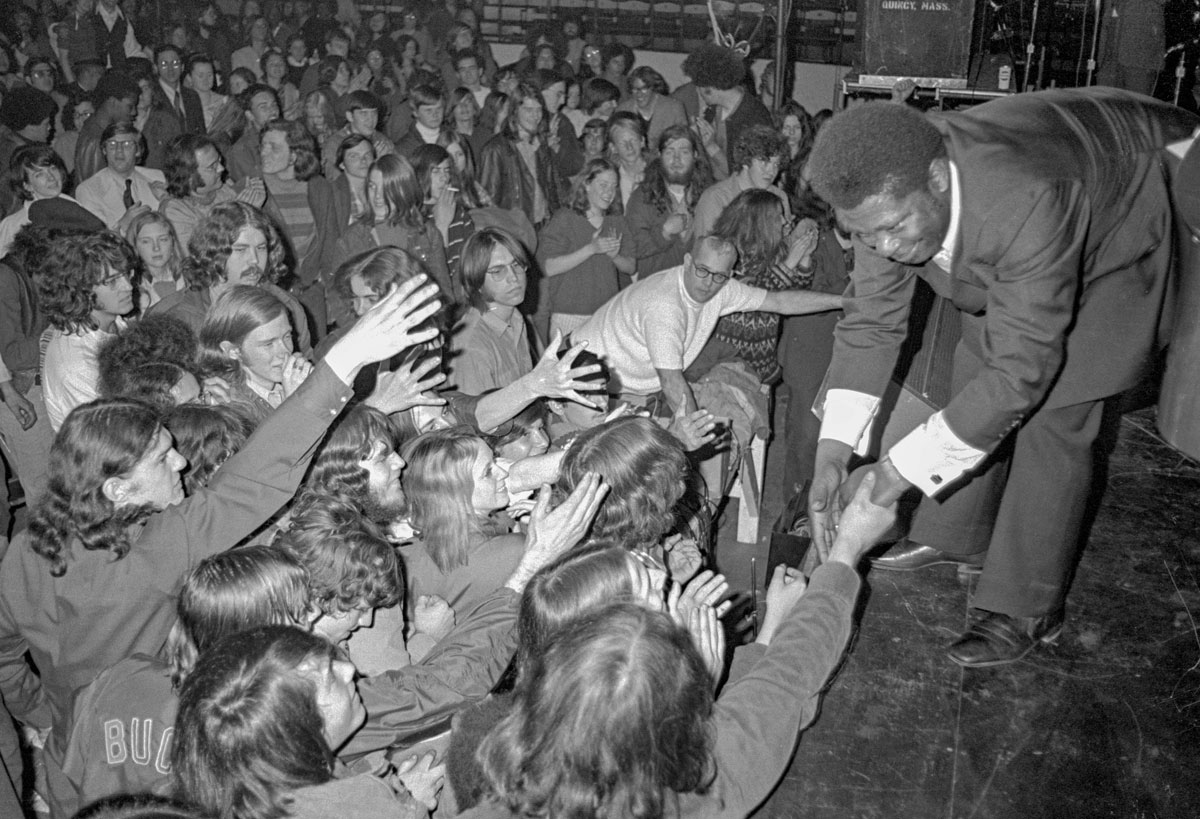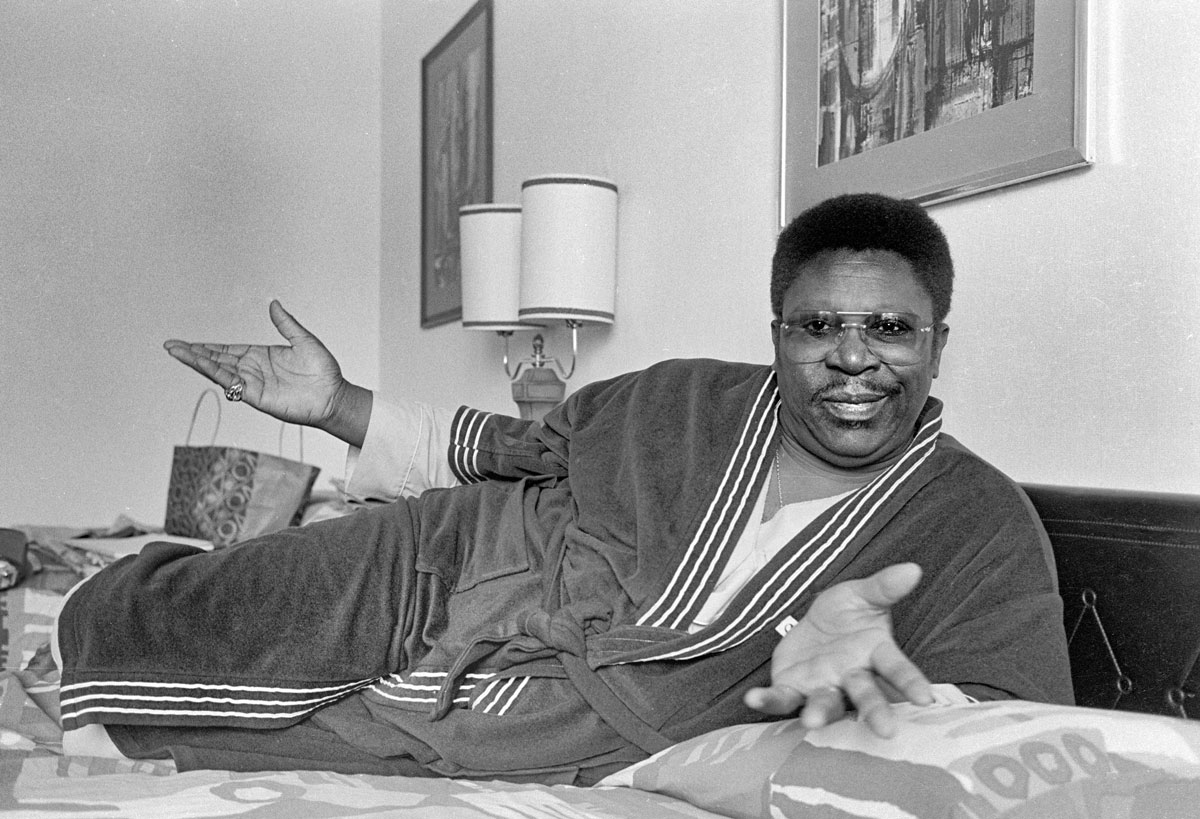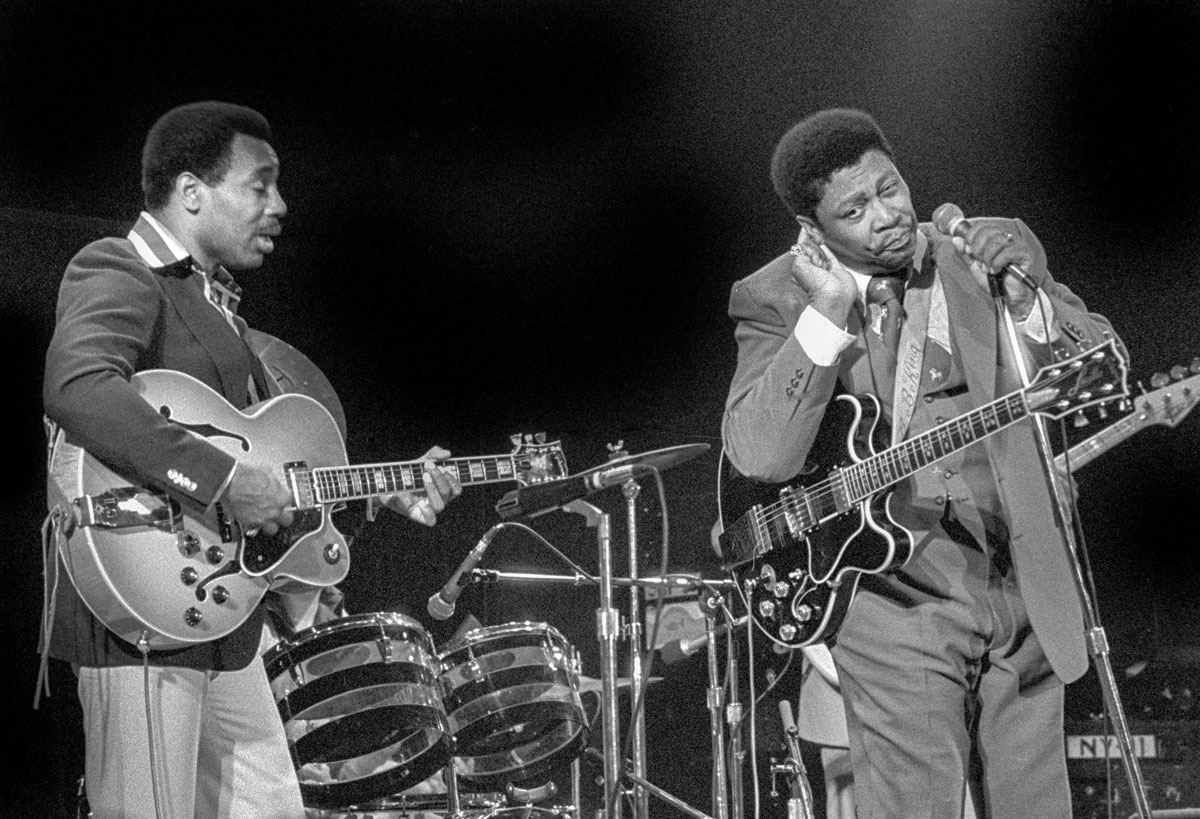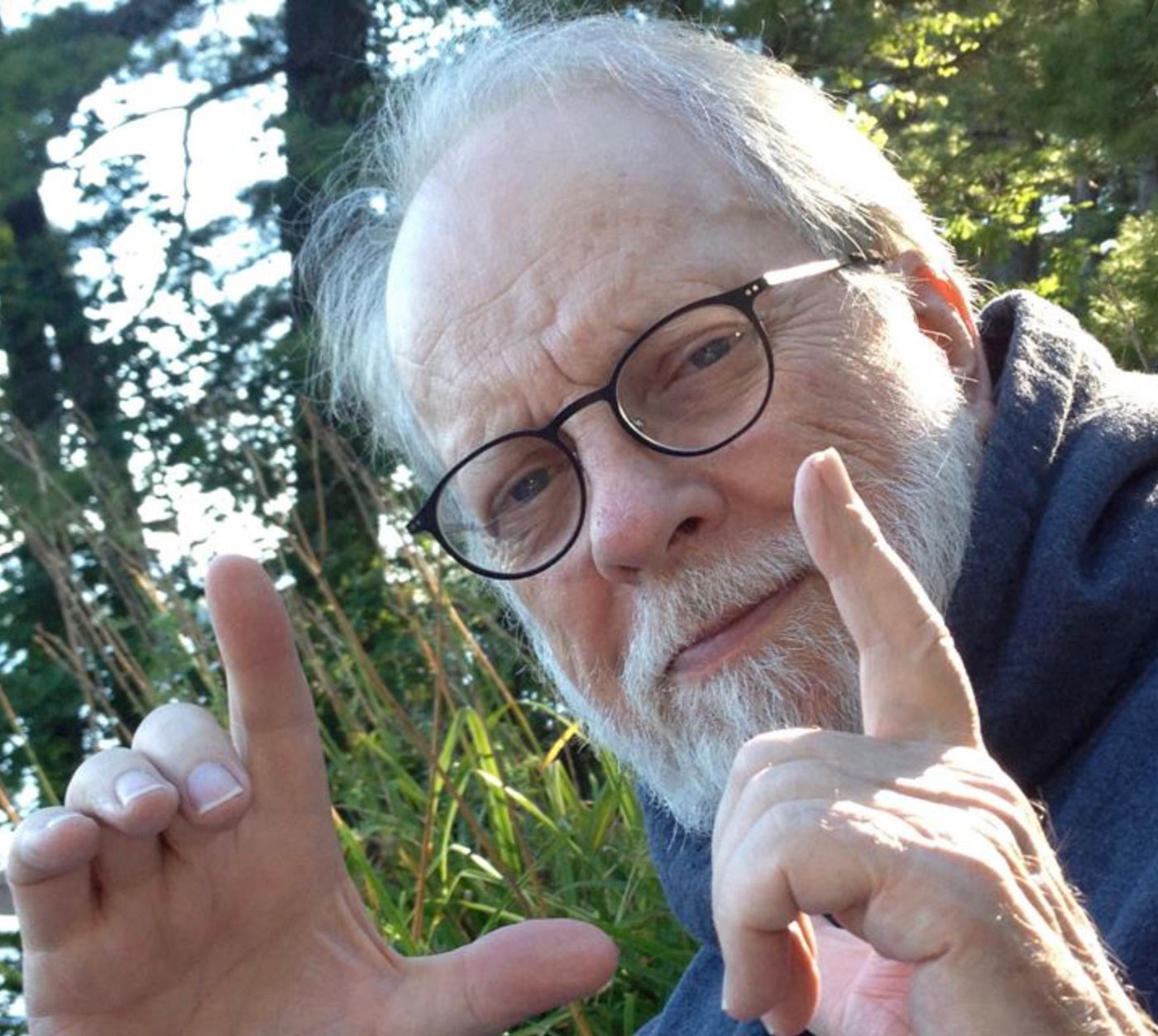
hen Charles Sawyer ’62 saw B.B. King engaging a small group of fans in conversation between sets during a 1968 performance at Lennie’s on the Turnpike in Peabody, Massachusetts, he decided to casually amble into the crowd. That’s when King spotted him.
“He broke off his conversation and looked toward me and I thought, ‘Oh God, he thinks he knows me,’” Sawyer says. “I started trying to figure out ways to say, ‘I’m not who you think I am, I’m just a nobody.’”
For about five more minutes, that was probably true.
That glance was ultimately the seed that blossomed into a decades-long relationship during which Sawyer chronicled King’s life, first in a 1980 authorized biography and soon in a photographic retrospective called “B.B. King: From Indianola to Icon,” due to be published next spring by Schiffer Publishing. It also served as a singular moment at the beginning of a fulfilling life’s journey for Sawyer that would fittingly be bookended by creative works about King.
And it all began with a hospitable greeting from the blues legend during that 1968 show.
“He was very warm and welcoming, and I was a kid with a camera and a tape recorder and a million questions,” Sawyer says.
That curious “kid” quickly struck up a relationship with King. He returned to future shows with his camera and tape recorder and soon received access to King’s dressing room and an invite to his hotel room. Sawyer began developing a pitch for a biography as he headed out on the road to tour with King.
Sawyer penned a manuscript and — after rejections from some 53 publishers — Doubleday published “The Arrival of B.B. King: The Authorized Biography” in 1980.
Among the highlights of the biography research, Sawyer says, was the opportunity to see King in front of a Black audience at the High Chaparral in Chicago during the late 1960s.
“That nightclub gave me a glimpse of the culture that made B.B. a great celebrity in Black America. He was virtually unknown in white America until the mid-to-late 1960s,” Sawyer says. “I came in at the time when that transition had begun, so it was a really singular opportunity for me to see that world.”
Sawyer took thousands of photographs of King and his world, but his 1980 biography included only 80 to accompany the text. Now in retirement, Sawyer was inspired by the power of the unused photos and about two years ago began work on the photographic biography that will include several hundred images of King.
“My way of describing this new book is that I realized I had the opportunity to tell B.B.’s story with images accompanied by text, not the other way around,” Sawyer says.
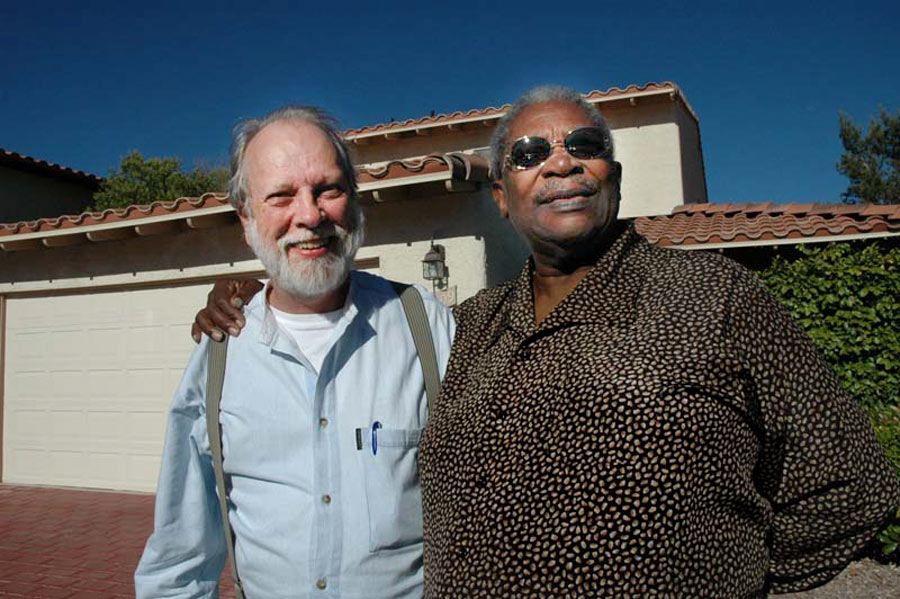
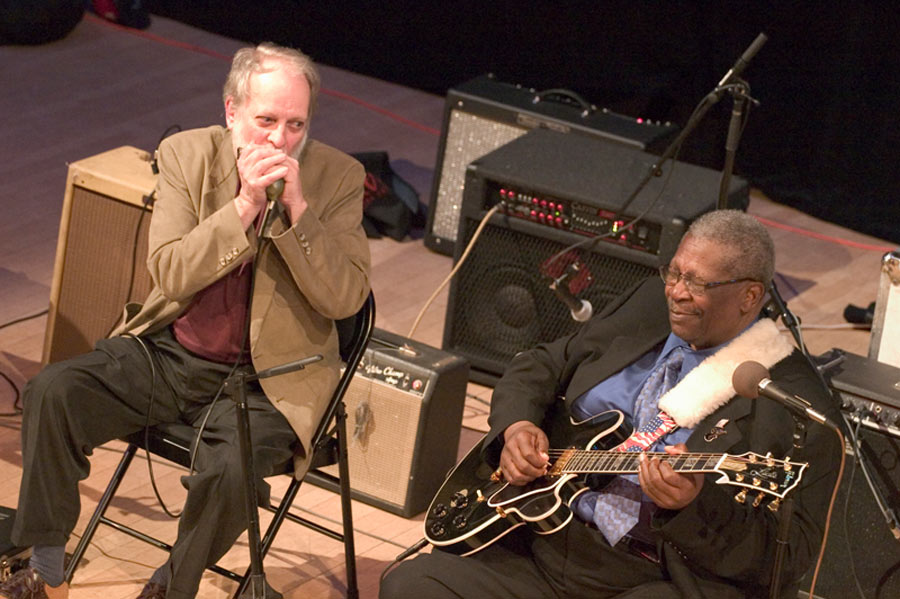
Biographical storytelling is something Sawyer is quite familiar with. He’s a fan of Six Word Memoirs — a website of ultra-concise mini-biographies reportedly inspired by Ernest Hemingway — and has penned several himself, including “Having but one, lived several lives.”
There’s no hint of hyperbole there. Sawyer is an avid photographer who in the 1970s chronicled political dissent in Czechoslovakia and Poland and was published in Harper’s, The New York Times and the Christian Science Monitor. He went on to a career as a college professor, making stops at Yale and Harvard — coordinating a visit from King to his history of blues class at the latter — and eventually changed lanes once again to join the technology and software industry, where he worked for nine companies over 33 years, the last four at Google prior to his 2015 retirement at age 74.
Sawyer’s journey involved many personal joys — he married his third wife, Cherie Hoyt, in 1991 and the couple had a son, Samuel, the following year. But there was a devastating personal tragedy, as well. In 1988 his second wife, Bistra, was killed in a car accident caused when a drunk driver jumped the median, an accident that left Sawyer with a traumatic brain injury and resulting PTSD. Sawyer credits Cherie, who was Bistra’s friend, with getting him back on his feet.
“She saved me,” Sawyer says. “It was about as devastating as any loss could be, and she brought me back. My embrace of life, my determination, prevailed over those circumstances.”
Through it all, B.B. King is the thread that ties Sawyer’s life stories together. The photos that Sawyer snapped during that fateful first meeting in 1968 became not just his inspiration for writing B.B.’s biography, but the start of a decades-long personal arc and a relationship that grew so strong Sawyer delivered a eulogy at King’s funeral in 2015. Now, fulfilled and retired, Sawyer is spending his time sifting through the images that captured the moments where it all began.
“In this very strange way of life unfolding, I have become a photo archivist, and I have one client — the man I used to be,” Sawyer says. “You could say I feel a little bit like Rip Van Winkle, who woke up after 40 years with a rusty camera in his hand.”
(To view more of Sawyer’s photography, visit his website and this gallery featuring images of blues greats. You can also read more of his writing here. Sawyer can be contacted at blues4charlie@gmail.com.)
